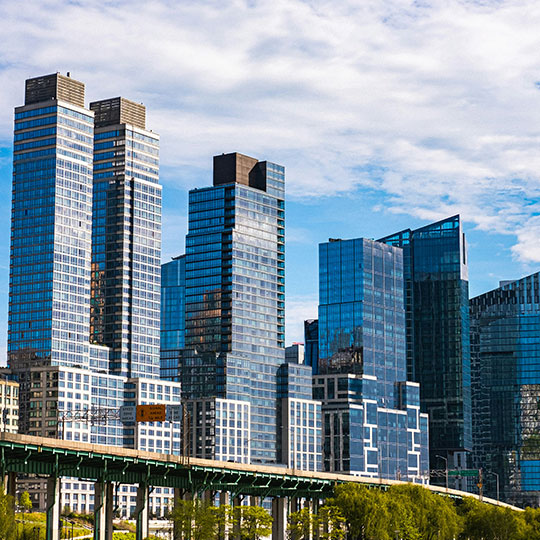
The port of Lüderitz Bay needs to be expanded so that more ships can dock and more goods and cargo can be stored. The port authority NamPort has commissioned two environmental impact studies in order to carry out the expansion in two phases.
According to GeoPollution Technologies, which released details on Monday, Phase 1 involves extending the main quay wall by 500 meters and reclaiming about 17 hectares of sea area below the high-water mark as reserve land for the expanded quay. In Phase 2, the existing concrete jetty in the southernmost part of the port will be demolished, about three hectares of sea area will be reclaimed, and a new concrete jetty will be built at the northern end of the area.
The works include dredging and loosening the existing loose sand material covering the rocks where the new quay wall is to be constructed. A supporting wall made of steel sheet piles is to be placed directly on the rock base, with uneven gaps between the steel wall and rocky seabed filled with concrete. “Alternatively, a reinforced concrete quay wall on piles with a rock covering beneath it may be built to hold back the sand fill behind it,” the company stated on Monday.
Another option would be to install two rows of anchor walls to secure the steel wall. The main construction element of the second phase is the reclamation of about three hectares in the southern part of “Robert Harbour” with the construction of the new concrete jetty. Land reclamation between the quay wall and the eastern shore of Shark Island is restricted to the area below the high-water mark, i.e., within the existing jurisdiction of Lüderitz Bay Port. Between 1904 and 1908, during the uprising against German colonial rule, hundreds of Nama and Herero prisoners were held under harsh conditions on Shark Island. The island is to be declared a memorial site.
The extended quay walls, the new jetty, and the additionally reclaimed land will enable more ships to dock and provide more storage space for additional cargo, thereby increasing the urgently needed handling capacity of the port. A separate environmental study for Phase 2 of the port expansion project will be conducted more or less in parallel with Phase 1. Depending on demand, the phases may also be subdivided into smaller sections. Interested and affected parties can register by September 1 at port@thenamib.com and request further information there.
According to GeoPollution Technologies, which released details on Monday, Phase 1 involves extending the main quay wall by 500 meters and reclaiming about 17 hectares of sea area below the high-water mark as reserve land for the expanded quay. In Phase 2, the existing concrete jetty in the southernmost part of the port will be demolished, about three hectares of sea area will be reclaimed, and a new concrete jetty will be built at the northern end of the area.
The works include dredging and loosening the existing loose sand material covering the rocks where the new quay wall is to be constructed. A supporting wall made of steel sheet piles is to be placed directly on the rock base, with uneven gaps between the steel wall and rocky seabed filled with concrete. “Alternatively, a reinforced concrete quay wall on piles with a rock covering beneath it may be built to hold back the sand fill behind it,” the company stated on Monday.
Another option would be to install two rows of anchor walls to secure the steel wall. The main construction element of the second phase is the reclamation of about three hectares in the southern part of “Robert Harbour” with the construction of the new concrete jetty. Land reclamation between the quay wall and the eastern shore of Shark Island is restricted to the area below the high-water mark, i.e., within the existing jurisdiction of Lüderitz Bay Port. Between 1904 and 1908, during the uprising against German colonial rule, hundreds of Nama and Herero prisoners were held under harsh conditions on Shark Island. The island is to be declared a memorial site.
The extended quay walls, the new jetty, and the additionally reclaimed land will enable more ships to dock and provide more storage space for additional cargo, thereby increasing the urgently needed handling capacity of the port. A separate environmental study for Phase 2 of the port expansion project will be conducted more or less in parallel with Phase 1. Depending on demand, the phases may also be subdivided into smaller sections. Interested and affected parties can register by September 1 at port@thenamib.com and request further information there.

















